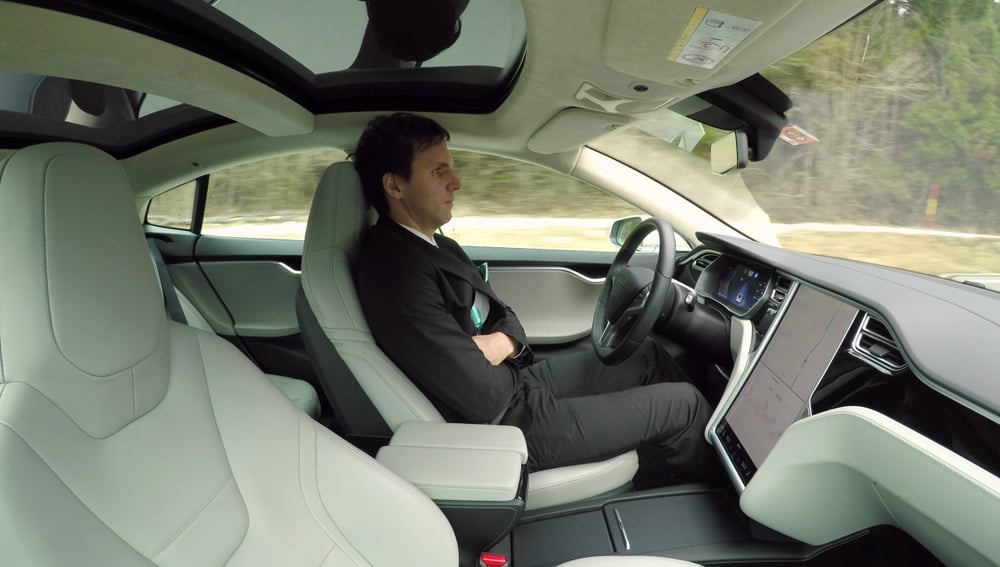
Elon Musk, the CEO of Tesla, while speaking at an invitation-only event for investors at the carmaker’s headquarters in Palo Alto, California, claimed that Tesla is on the verge of introducing self-driving cars, hinting that it can happen as quickly as the end of this year. His usual flamboyant self, Musk said that it is “financially insane to buy anything other than a Tesla” and criticized the concept of LIDAR (Light Detection and Ranging) – the device that senses activity in a driving environment – saying it is a “fool’s errand” to pursue that technology.
Musk has had a long history of overpromising on Tesla’s product capabilities, and reactions to the new claims have been met with skepticism as well. For one, trashing LIDAR, until now an integral part in the visual arsenal of a self-driving car, has not gone down well within the autonomous landscape, as virtually every frontrunner in the niche is using LIDAR to good success.
Musk’s insisted that Tesla’s new microchip is objectively the best chip in the world, and that by mid-2020, Tesla’s autonomous capabilities will have improved so much that drivers will no longer need to pay attention to the road. If this statement holds, Tesla’s self-driving cars will meet the requirements of SAE Level 5 autonomy – a technology that can make a vehicle navigate without human help across all driving environments and situations.
Google’s Waymo and General Motors’ Cruise Automation are among the leaders in the self-driving space, and even with their sophistication and the thousands of hours their self-driving automobiles have clocked on the road, it is unsure if fully autonomous vehicles will see widespread use in the near future. Though Waymo does offer rides to a limited number of test passengers in the Phoenix region, the cars always come with a human behind the wheel, ready to take control in case of an emergency or unforeseen situation.
In the present setup, what is feasible is for self-driving companies to deploy vehicles with Level 4 automation, in which the vehicle can make decisions in situations when human drivers do not respond in time. This could be done across geofenced locations like interstate highways where the possibilities of pedestrians and stray vehicles are more remote.
Leaving aside the question of whether Level 5 automation is even possible, Musk’s claims about Tesla having a self-driving car in just over a year look to be highly improbable on the current roadmap to driving autonomy.
The only thing in Tesla’s favor is the number of cars it has sold across the world. This quarter, Tesla is expected to have a total of 500,000 cars on the road, from which the company collects driving data that is used to improve the predictability of Tesla’s neural networks, helping steer the self-driving car. Nonetheless, it would all be pointless unless Tesla can prove without question that its cars can drive without help across every situation.
Musk also stated that Tesla is looking to introduce robotaxis. “A year from now, we’ll have over a million cars with full self-driving software,” he said. Tesla’s idea is to create a business model in the on-demand taxi hailing market that incumbents like Uber and Lyft envision – running self-driving taxis. Running automated taxis in the market would mean cutting out the taxi drivers – who comprise a huge percentage of taxi-hailing operations and costs. Automation will slash ride charges, giving the company that commercially deploys self-driving taxis a massive edge over its competitors.
Tesla plans to introduce an application wherein Tesla owners can opt-in on generating revenue by renting out their cars for the on-demand taxi market when they are not in personal use. Tesla is looking to take a cut of 20 to 25 percent per successful ride, which would significantly boost its revenue.
Musk did casually admit that there might be a few “fender bender” situations, implying that people might get hit if conditions go awry. However, he was quick to acknowledge that Tesla would be held liable for any accident that happens on the road caused by a vehicle that is controlled by its autonomous driving system.
All this being said, Musk’s tall predictions come right before its quarterly earnings report, which is expected to be below expectations as the company has had a disappointing few months of car sales. This has led Tesla’s stock to sink 5 percent this week to $262.75 per share. Going by all of Musk’s claims that have routinely failed to hold water, it remains to be seen if this announcement lives up to its promise, or if it will go down as yet another assertion not based on actual results.








Brian
"…he was quick to acknowledge that Tesla would be held liable for any accident that happens on the road caused by a vehicle that is controlled by its autonomous driving system."
This is the most incredible statement of the article. Tesla is setting themselves up for lawsuits a-plenty with this stand. Will they do the same with an intoxicated driver? That’s a bold statement, Mr. Musk.
John
"General Motors’ Cruise Automation are among the leaders in the self-driving space"
Is this the same General Motors that couldn’t get ignition switches right and then tried to hide it causing the deaths of several people? Or is this some other alternate reality General Motors? Why would you trust a company that cannot even make a reliable car to make one of the most profound technological advancements of our lifetime?